The past may hold treasures, still remembered but the future is bound in hope, in belief and in the knowledge that with life, all things are possible.
Did you know our pyramids? The Nigerian pyramids? Where you even aware that once upon a time we had them? My daughter said ‘Mama, is that a postcard from when we went to the pyramids in Egypt?’
‘No, it isn’t. These are pyramids that used to exist in Nigeria, made of sacks of groundnuts.’
Peanuts to y’all I know. Groundnuts to us. For they come…from the ground.
Wikipedia: Peanuts are known by many other local names such as earthnuts, ground nuts, goober peas, monkey nuts, pygmy nuts and pig nuts. Despite its name and appearance, the peanut is not a nut, but rather a legume.
So did you know that? That once upon a time, we had our very own Nigerian pyramids? Our tourist attraction. Made in Nigeria – something of national pride and value.
When will groundnut pyramids return?
The formation of groundnut pyramids was the idea of late Alhaji Alhasan Dantata, a business magnate who was also a merchant of kolanuts, based in Kumasi, Ghana, from where he shipped his goods to Nigeria by sea.
In 1919, late Dantata returned to Kano at the height of the groundnut boom and became the most prominent Hausa trader to benefit from its commercial success and in five years of his involvement, he became a major supplier of groundnuts to the Royal Nigerian Company (RNC).
Kano State became famous in the world commerce following the magnificent groundnut pyramids during the Nigerians period of agricultural boom, especially in 50s, 60s and 70s and it contributed 70 per cent to the region’s export earnings.
Before oil. And gas.
Update, 25th February, 2014
Nairametrics says Groundnut Pyramids Are Back….But On paper
“The Federal Government on Monday inaugurated the Nigeria Groundnut Value Chain, which is expected to produce 120,000 metric tonnes of groundnut grains valued at N24bn ($155m). It said the inauguration was to revive the already abandoned groundnut production system in the country as well as restore the groundnut pyramids in the northern part of the country.”
Update, 12th August, 2013.
The Blueprint newspaper, online says ‘FG (Federal Government) set to rebuild groundnut pyramids’! A Groundnut Value Chain (GVC) project kicked off this year, and is on-going.
Twas my father.
And it sat amongst his ‘things’, which I rifled through….broken, pink-eyed and still stunned at his death. His death, only a month after I returned from University in Liverpool. Only four days after the birth of his first grandchild who is now almost a teenager.
It was a postcard that first showed me the pyramids, a coloured postcard of geometrically arranged sacks, tucked amidst black & white postcards of Lagos.
Unbelievable Lagos. Lagos in sepia. Muted. Toned. Manageable.
Lagos. A Lagos where I bet you, Nigerians respected one another. A Lagos where no one pushed or jostled past you angrily, as though you’d stolen something of theirs. Hurt their child. Or parent. A country of saneness. A country of respect. A different country from today. Streets clean, orderly, sane.
I imagine this sanity, this ‘peaceable’ nation, typified in these postcards of Lagos was true of every city and town across Nigeria. A Nigeria where standards were important, and upheld.
Respect & Standards. Two things I long for today. Pray for. Earnestly desire to see rife and rampant in my country. Respect for people, for things, for the country, for self. No need for ‘I-big-pass-my-neighbour.’ We are good enough, and worthy enough to live in a sane land!
A land, a Nigeria where visionaries could act out their dreams, for the greater good.
These postcards came from my father’s collection. A record of life as it used to be. Framed as they are in my living room.
We had pyramids like Egypt. But only in the heart of Kano city, in the north of Nigeria.
Pyramids of sacks.
Sacks of nuts.
Groundnuts. Peanuts, but ground nuts.
Growing beneath the ground as they do.
Epa. To the Yorubas.
Groundnuts to me.
Ancient symbols of our nation.
Forgotten? I hope not.
Elizabeth Jackson, author of the African cookbook, South of The Sahara writes:
‘When I was growing up in Kano, a large city in Northern Nigeria, peanuts were still a big cash crop. Kano was an export site, and the peanut bags waiting to be shipped out were stacked in the sun in huge pyramids, each pyramid holding 1000 tons of peanuts. A railroad ran strategically through the center of the 60 or more pyramids. This was all located right in the heart of Kano, and the smell of fresh peanuts permeated the surrounding streets, mingling with the dust and oil and other city smells to make an unforgettable aroma.’
Today, the pyramids are gone. Why? How? Many speculations: breakdown in the rail system, focus on oil & gas, corruption and poor practices? I could go on and on.
I would love to bring them back….but in the interim, I intend to build them at home, or in my belly at least, one shelled nut at a time.
Boiled Groundnuts
Ingredients
Raw groundnuts Water SaltGreen peanut is a term to describe farm fresh harvested peanuts that have not been dehydrated. They are available from grocery stores, food distributors and farmers markets, during the growing season. In contrast, raw peanuts are dehydrated/dry peanuts. They are uncooked and ready to be boiled after being re-hydrated.
Directions
Fill a large bowl with cold, tap water and put in the groundnuts. Swirl them around with your hand, to loosen the dirt. Scoop the nuts out into a colander and discard the water. Repeat up to 3 or more times, till the leftover water runs (almost) clear. This is necessary to rid the groundnuts of the earth from whence they are dug up.
After they have been rinsed, soak them in fresh, cool water for about a half hour to rehydrate them.
After the soak, put the groundnuts in a large pot and fill it with room-temperature water, till all the nuts are submerged, and the water comes up about 2 inches above nuts. Note the nuts may float…and not stay under.
For my 10 cups of groundnuts, I needed 10 cups of water and 1/4 cup of table salt.
Stir the nuts and water to disperse the salt and cook covered and on medium-low heat for at least an hour, checking every 20 minutes to check the water hasn’t cooked out.
My nuts were perfectly cooked after an hour and a half but cooking times will vary.
Using a slotted spoon, I removed a few groundnuts to check for doneness, and then emptied out the cooked contents into a colander, to drain.
Then my friend B and I stood at the counter and feasted on peanuts. Talking and chatting till we forced ourselves away. These nuts are ADDICTIVE.
I deliberately cooked up a large amount so I could ‘reach for some’ if the craving struck. Like today. When I found the can of coke, perfectly wedged between a jar of pickled daikon and a bowl of forgotten chocolate ganache.
I could have been in the American South.
As J Ludlow comments, in Elise’s post on Boiled Peanuts:
‘….but hey we don’t drink soda in the South except for a club soda. No pop either. Everything is a Coke. What kind a Coke y’all want? A Dr. Pepper or a Seven Up?’
Storage
You can freeze your boiled groundnuts in food-safe containers.
To refresh/reheat them, pop in the microwave or do as I do and plunge them in boiling water for a minute or two. You may want to add some more salt if using boiling water but beware, too salty groundnuts can leave a bitter taste on your palate.
Love em? or Live em? Which type of groundnut fan are you?
[wpurp-searchable-recipe]The ‘Forgotten’ Groundnut Pyramids of Nigeria – – – [/wpurp-searchable-recipe]

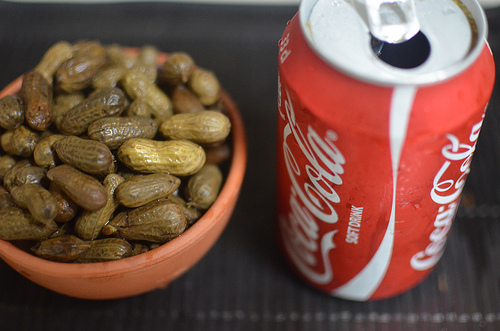


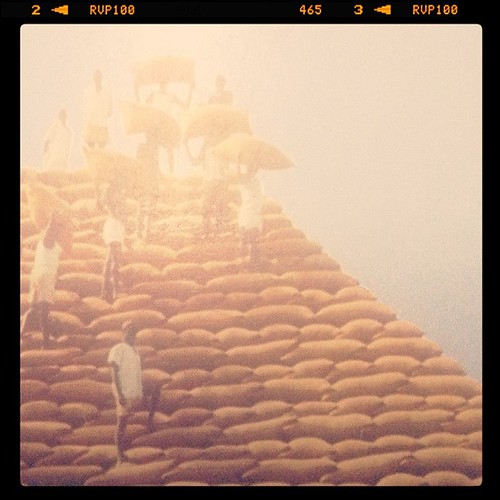
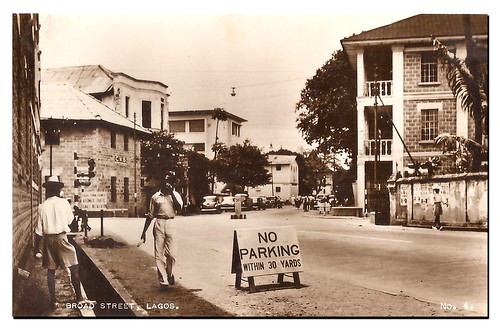


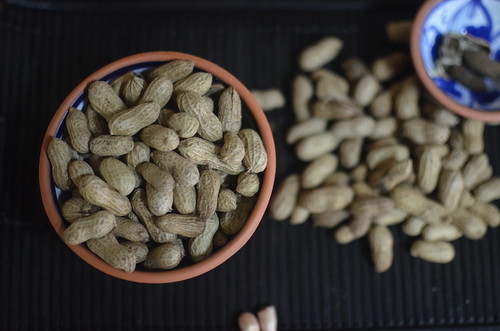

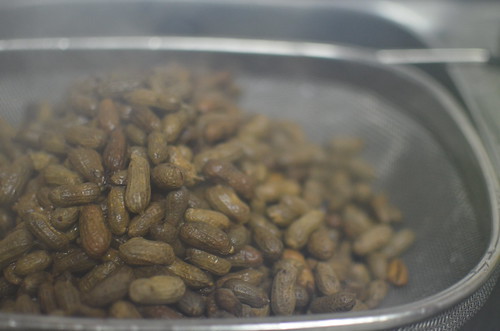
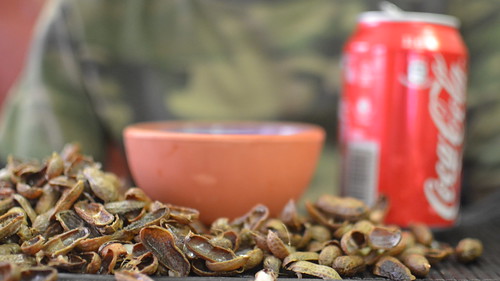
Leave a Reply